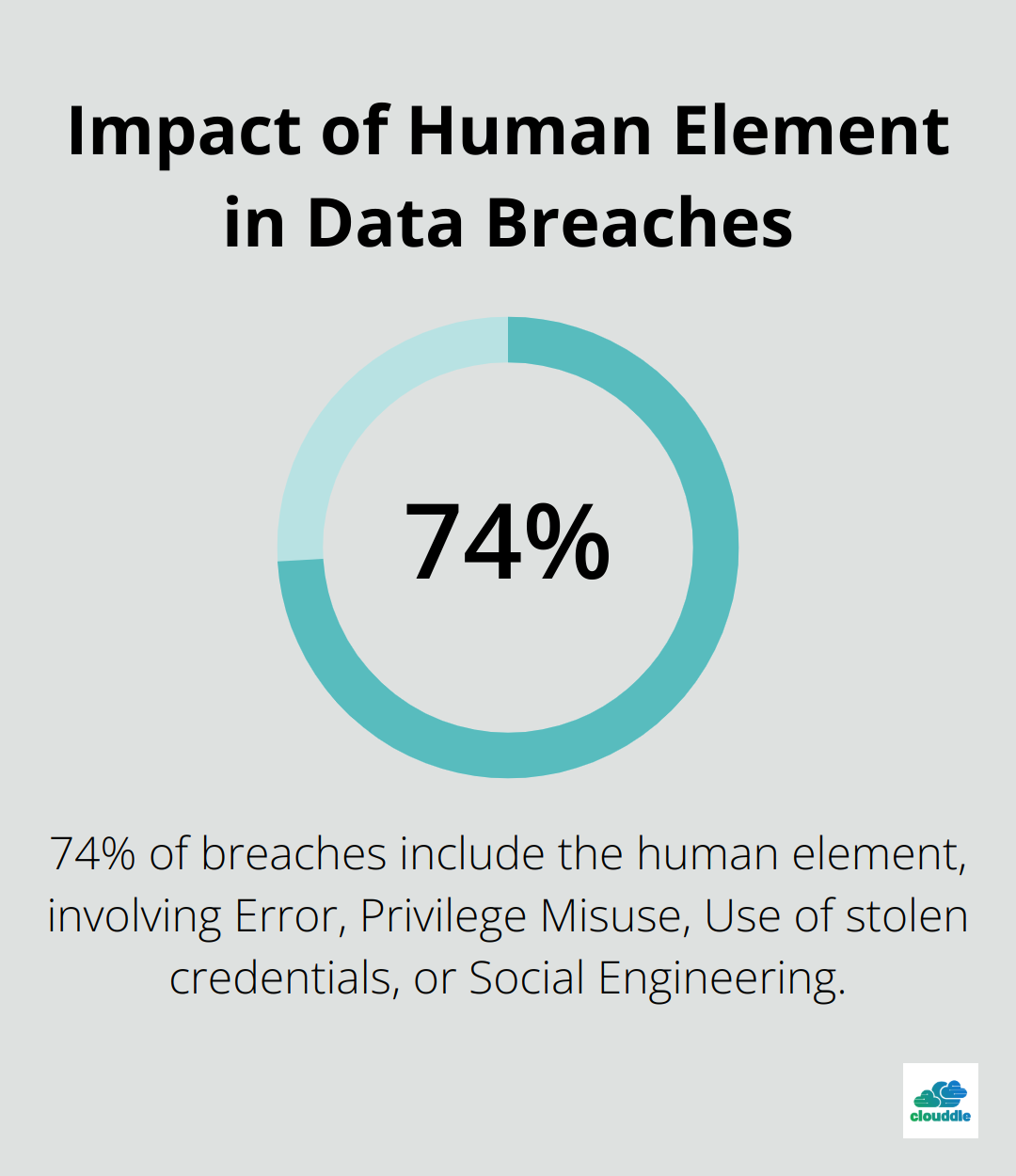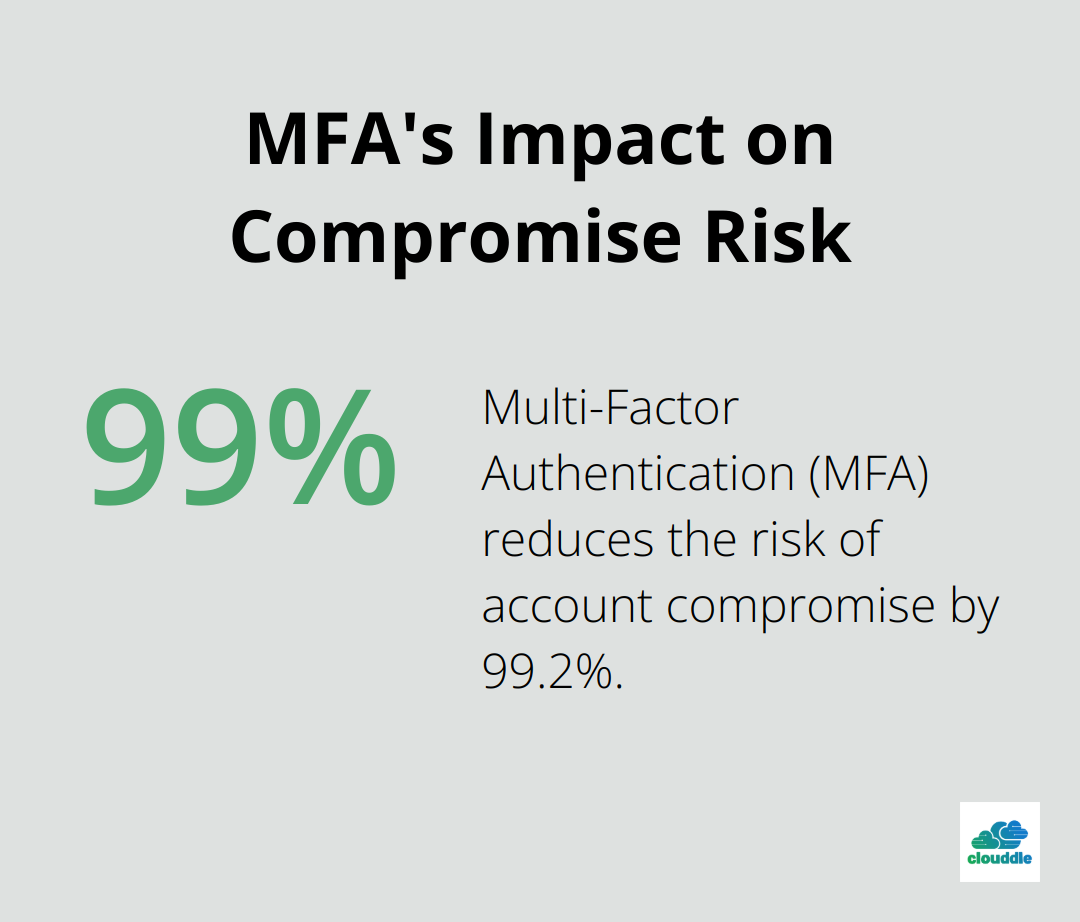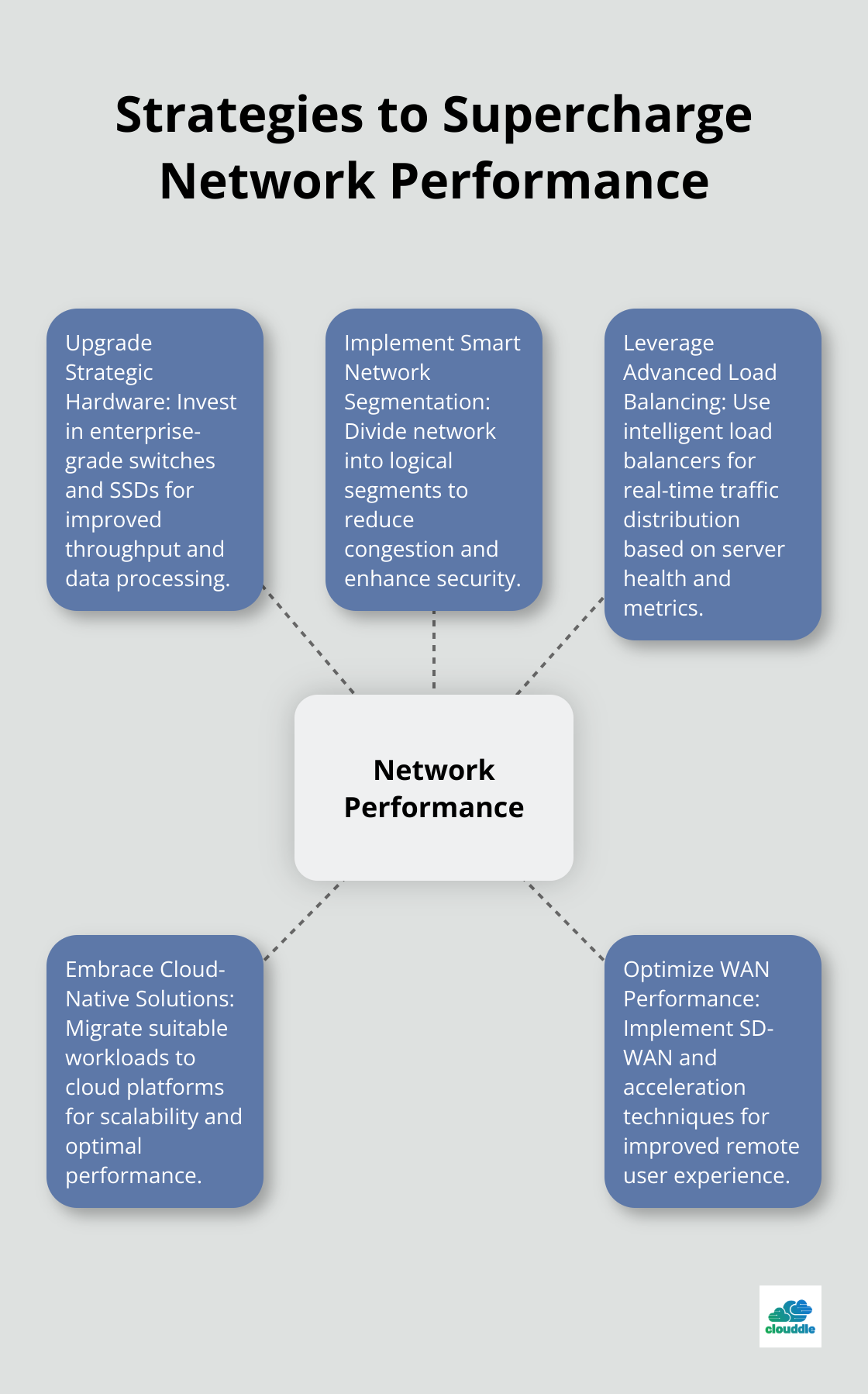In today’s digital landscape, a robust network infrastructure and security system is the backbone of any successful organization. At Clouddle, we’ve seen firsthand how vulnerabilities in these areas can lead to devastating consequences for businesses of all sizes.
This guide will walk you through practical steps to fortify your network, from conducting thorough audits to implementing cutting-edge security measures. We’ll also explore strategies to optimize performance and future-proof your infrastructure against evolving threats.
How to Assess Your Network Infrastructure
Map Your Network Topology
Start with a comprehensive network audit. Document all devices, connections, and software versions. Use network discovery tools to uncover hidden or forgotten devices. A 2023 Cisco report revealed that 61% of respondents had experienced a breach that impacted the resilience of the business.
Uncover Security Vulnerabilities
After mapping your network, look for weak points. Run vulnerability scanners across your infrastructure to identify potential entry points for attackers. Focus on outdated software, misconfigured devices, and weak authentication methods. The 2023 Verizon Data Breach Investigations Report highlighted that 74% of breaches include the human element, with people being involved either via Error, Privilege Misuse, Use of stolen credentials or Social Engineering.

Monitor Network Performance
Assess your network’s performance under various conditions. Use tools like Wireshark or NetFlow analyzers to track traffic patterns and spot bottlenecks. Examine metrics such as latency, packet loss, and throughput.
Project Future Capacity Needs
Evaluate whether your current infrastructure can handle your organization’s growth. Analyze historical data to forecast future requirements. Factor in increased cloud usage, remote work, and IoT device proliferation.
Scrutinize Access Controls
Examine your access control policies. Enforce the principle of least privilege, granting users only the access necessary for their roles.
As you complete your network assessment, you’ll uncover areas that require immediate attention. The next step is to implement robust security measures to address these vulnerabilities and strengthen your overall network infrastructure.
How to Fortify Your Network Defenses
Implement Multi-Factor Authentication (MFA)
MFA transforms access control. Microsoft reports that MFA reduces the risk of compromise by 99.2 percent. Apply MFA to all user accounts, particularly for privileged access. Combine something the user knows (password), has (smartphone), and is (biometrics) to maximize security.

Deploy Next-Generation Firewalls (NGFW)
Traditional firewalls no longer suffice. NGFWs provide integrated intrusion prevention, application awareness and control to see and block risky apps, and threat intelligence. The Sophos 2023 Threat Report indicates that 90% of organizations faced a network intrusion attempt last year. NGFWs significantly reduce this risk.
Encrypt Data in Transit and at Rest
Encryption serves as your final defense line if a breach occurs. Use TLS 1.3 for all web traffic and implement end-to-end encryption for sensitive communications. For data at rest, use full-disk encryption on all devices and servers. The IBM Cost of a Data Breach Report 2023 shows that extensive encryption use saved companies an average of $1.44 million per breach.
Automate Patch Management
Unpatched vulnerabilities often lead to breaches. Implement automated patch management systems to ensure timely updates across your network. The Ponemon Institute found that 60% of breaches in 2022 involved unpatched vulnerabilities. Try to achieve a 14-day (or shorter) patch cycle for critical updates.
Conduct Regular Security Audits
Security requires ongoing vigilance. Schedule regular security audits to identify new vulnerabilities and assess the effectiveness of your current measures. Employee training also plays a crucial role in maintaining a strong security posture. Stay informed about emerging threats to adapt your defenses proactively.
As you strengthen your network defenses, it’s equally important to optimize your network’s performance. The next section will explore strategies to enhance your network’s efficiency and scalability, ensuring it can handle growing demands while maintaining robust security.
Supercharge Your Network Performance
Network performance drives modern business operations. A slow or unreliable network cripples productivity and frustrates users. We’ll explore practical strategies to optimize your network‘s speed, reliability, and scalability.

Upgrade Strategic Hardware Components
Identify your network’s bottlenecks. Outdated switches or routers often cause issues. Invest in enterprise-grade switches with higher port speeds and lower latency. Upgrading from 1Gbps to 10Gbps switches can dramatically improve throughput for data-intensive applications.
Consider solid-state drives (SSDs) for your servers. Replacing traditional hard drives with SSDs can significantly improve performance for data-intensive applications.
Implement Smart Network Segmentation
Network segmentation boosts performance and enhances security. Divide your network into smaller, logical segments to reduce congestion and improve overall speed.
Create separate VLANs for different departments or types of traffic. This approach can reduce broadcast traffic and improve network performance. Prioritize mission-critical applications on dedicated segments to ensure consistent performance.
Leverage Advanced Load Balancing
Modern load balancing surpasses simple round-robin distribution. Implement intelligent load balancers that make real-time decisions based on server health, current load, and application-specific metrics.
Consider global server load balancing (GSLB) if you have multiple data centers to optimize performance across geographical locations.
Embrace Cloud-Native Solutions
The cloud offers unparalleled scalability and performance benefits. Migrate suitable workloads to cloud platforms that automatically scale resources based on demand. This approach eliminates overprovisioning and ensures optimal performance during peak times.
Start with non-critical applications to gain experience, then gradually move more complex workloads.
Optimize WAN Performance
WAN optimization becomes essential with the rise of remote work. Implement SD-WAN solutions to intelligently route traffic and prioritize critical applications.
Try WAN acceleration techniques like data deduplication and compression. These can improve performance for remote users.
Final Thoughts
Network infrastructure and security require constant attention and adaptation. Organizations must stay vigilant against evolving threats and implement proactive measures to protect their digital assets. Regular assessments, robust security protocols, and performance optimization form the cornerstone of a resilient network strategy.
The future of networking lies in flexibility and scalability. Cloud-native solutions, software-defined networking, and AI-driven security tools will shape the landscape of network management. Organizations should embrace these technologies to future-proof their infrastructure and gain a competitive edge in the digital realm.
We at Clouddle understand the intricacies of modern network infrastructure and security. Our managed IT and networking services can help you navigate these challenges with tailored solutions. We empower businesses to focus on growth while we handle the technical complexities, creating a foundation for innovation and sustainable success in an increasingly connected world.


